Activity 6 – Clothing and Adornment
You can tell a lot about a person, their culture, and their environment just by what they wear. For example, a person wearing a T-shirt and shorts likely lives somewhere warm. A person in a business suit might be on their way to work in an office setting. Clothing both protects and communicates. How a culture achieves these two goals can tell us a lot. Anthropologists study clothing to learn how people in a culture protect their bodies, dress for specific jobs or roles, display (or conceal) their wealth, and express themselves as individuals.
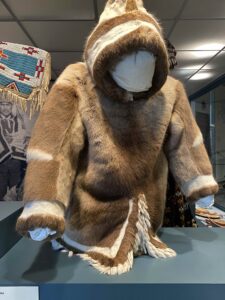
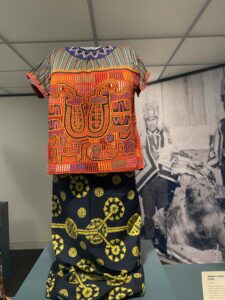
Just as with housing, what clothing we wear is partly determined by the environment in which we live because one purpose of clothing is to protect our bodies from the elements. Compare these two outfits. On the left is an parka made of caribou skin. On the right is a blouse and skirt made of woven light cotton. Where do you think each was worn, somewhere that’s normally hot or cold?
The caribou park is from the Arctic – a very cold environment. Native groups who live here take advantage of the fact that caribou are naturally adapted to keeping warm in frigid conditions buy sewing from their warm skin and fur. The outfit on the right was made by the Kuna people of the San Blas Islands off the coast of Panama. The hot, humid weather here means clothing must be light and airy so people stay cool.
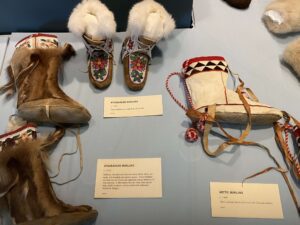
Here are a variety of mukluks. Which of the above outfits do they most likely go with? Do they look more like your sneakers or snow boots? What do you think they’re made of?
If you guessed animal skin you were right! Like the parka above, these mukluks are made of animal skin – usually caribou or seal. Unlike the parka, however, the skin in mukluks is sewn with the fur on the inside, making a nice, soft, warm shoe that will resist the wet conditions of the snow and ice in the Arctic.
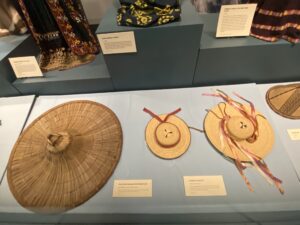
People all over the world solve similar problems with their clothing. The hats to the right all serve to protect the face, but they look very different. Why do you think this is? This is possibly due in part to stylistic differences, but it can also be functional as well. What purposes do you think these hats serve?
The larger hat on the left is a rice paddy hat from the Philippine Islands. It’s large shape would provide excellent protection from the heavy rains in that region. The two smaller hats on the right are from the Mexican state of Chiapas, which gets much less rain, but is very sunny. These hats would do an excellent job of shading the eyes.
But clothing is for so much more than just protection! When you look at what someone is wearing you actually get a lot more information than you might think. For example, if you see someone in a suit and tie, are they going to the beach? What do you think someone wearing a lab coat might do for a living? What is someone in a big white gown doing?
It’s important to remember, too, that these messages are culture-specific. That means, the cues we read in an outfit will mean different things to different cultures. While white is a traditional color for brides to wear on their wedding day in America, in China white is associated with funerals and brides are traditionally married in red.
The outfits below are (from left to right) from Peru, Turkmenistan, and the American Great Plains. Each outfit communicates specific things through color and pattern that would be clear for people in the associated cultures. These messages usually have to do with identity – what group a person is from and what status they hold for example. Being able to tell these things about a person at first glance helps people know how to interact with each other.
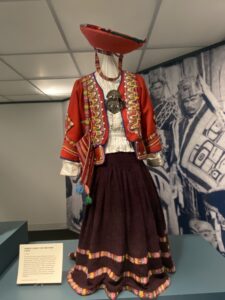
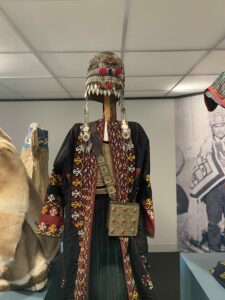
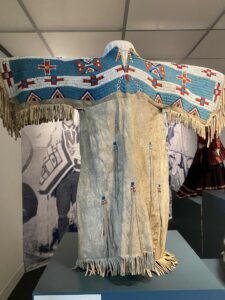
Activity Time!
Let’s compare these three outfits! Looking at the three dresses from Peru, Turkmenistan, and the Great Plains, answer the questions in your Research Notes. What is similar about these outfits? What is different? Are they similar to anything you own?
